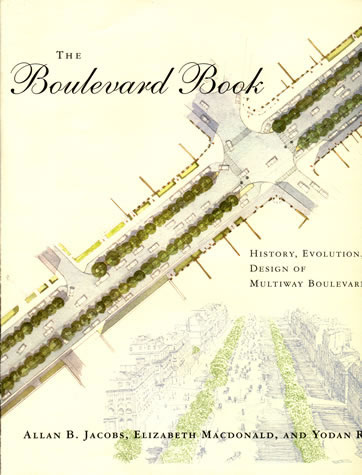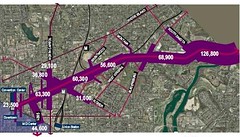Big digs, tunnels and DC's New York Avenue
We all know about Boston's Big Dig project, which removed I-95 as a scar across the city of Boston, and tunneled it, although the project wasn't perfect and there were serious cost overruns. (See the Boston Globe special webpage "Beyond The Big Dig" and the AP story "Boston's 'Big Dig' finally opens to public.")
Inga Saffron, the urban design writer for the Philadelphia Inquirer, wrote a long piece about how Philadelphia needs to consider a "Big Dig" of their own. See "Deep Deep six for I-95 by Penn's Landing? Boston's Big Dig has gotten planners here thinking about tearing up a riverfront section. Traffic experts fear a big snag." (Note also that urban planner Joseph Passonneau around 2000 suggested that the Southeast-Southwest Freeway in DC should be converted to a street level boulevard. See "HISTORY OF THE SOUTH CAPITOL STREET STUDY AREA: HOW THE STUDY AREA CAME TO EXHIBIT ITS PRESENT CONDITIONS.")

DC's New York Avenue functions in part as a freeway connector between I-95 and the Baltimore-Washington Parkway in Maryland and I-95, via I-395 in DC and Virginia, in Virginia. Much of the traffic on the street is "through" traffic going to Virginia or Maryland, while a significant amount is traffic of people coming to and leaving DC specifically, and it also functions as a local road for people within DC.
From time to time I forget that DC's New York Avenue Corridor Study did propose to tunnel New York Avenue in part. But for cost reasons, they didn't make the recommendation that New York Avenue, be tunneled from the DC-Maryland border to the connection with I-395. Instead, they proposed that a tunnel start around the Union Station railyard (North Capitol Street) and from there to downtown.

New York Avenue, DC, Average Daily Traffic Volumes (2000). DDOT image.
There needs to be a true re-do of that corridor, and a tunnel from the border probably is in order, although how to pay for it is another question. One way in part would be to create a massive urban renewal district from the DC-Maryland border to the New York Avenue-New Jersey Avenue NW connection to I-395.
At the eastern end, there are two 17 acre parcels (Abdo, Hecht warehouse), plus property as part of Fort Lincoln that had been slated to become a big box shopping center, and other development opportunities. At the western end, the land currently occupied by I-395 between K Street and New York Avenue could be recaptured and developed, and there are parcels abutting City Vista at 5th and K also, among others.
Bonds could be let against future increases in tax revenue. But all the bond money should go to building a tunnel and surface streetscape improvements, and maybe some transit improvements.



1 Comments:
Thank you for a very informative articles.
Post a Comment
<< Home